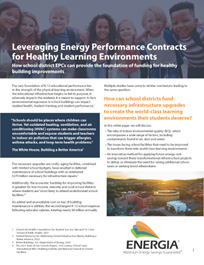Discover how underfunded buildings are worsening educational inequities and learn how your school district can address the problem through energy performance contracts.
By Kendra McQuilton, Energia CEO
Educators recognize that striving for equity in all opportunities and outcomes can level the playing field for students being left behind.
Educational inequity exists in many forms, most notably in the provision of billions less in school funding to predominantly nonwhite school districts, despite having the same amount of students as predominantly white school districts. In addition, there is a lack of diversity in the teaching and administration ranks and a lack of parity in student experiences like access to course offerings, field trips, and extracurricular activities.
Learn about an innovative method for applying future energy cost savings toward transformational infrastructure projects
There is less discussion, however, about the significant negative impact that decaying and overcrowded school buildings have on students, particularly those in low-income, minority districts. The topic deserves a much stronger focus in our nation’s quest to banish educational inequities. The quality of physical classroom environments must be championed at the highest levels of student advocacy.
Healthy School Buildings are Fundamental to Equity
The U.S. Commission on Civil Rights has reported that low-income African American and Hispanic students are more likely to attend poorly maintained schools. Some school buildings have been called “death traps” because they have so many physical problems and many have been deemed unsafe.
Our nations received a D+ – once again – in the most recent Infrastructure Report for Schools from the American Society of Civil Engineers in 2021.
In addition, the report said that 53 percent of schools need to update or replace multiple building systems, like HVAC, and 24 percent were rated as fair or in poor condition. The report data shows that school districts should be spending $58 billion annually just to maintain and operate existing public school facilities. Upgrade spending is estimated to be $77 billion annually for systems, components, fixtures, equipment, and finishes as they reach the end of their usefulness. Obviously, spending at these levels is not happening.
Meanwhile, aging and deteriorating buildings affect student health, learning and student success, according to a study by the Healthy Buildings Team at Harvard University. The study made the scientific case that school buildings are foundational to student success, directly impacting health, thinking, and performance. Their research reviewed decades of scientific evidence which was distilled into nine key fundamental building factors that influence the health and performance of students, including ventilation, air quality, lighting, moisture, water quality and more.
Addressing some of these key factors can have a huge impact on the school building and the health and academic performance of students. Investments of these kinds directly impact the overall success of students today and in the future.
Financing Building Inequities Can Be Done NOW through Energy Savings
There is a way school districts can prevent the inequities caused by the physical classroom environment from deepening in the face of a potential recession and painful cuts caused by the pandemic.
The Environmental Protection Agency (EPA) reports that our nation’s school districts are spending $6 billion a year on energy, and that 30% of that energy is used inefficiently. One unique finance option is to reinvest guaranteed energy savings generated from a budget neutral energy performance contract to fund modernized learning environments. Out of the nine foundations of a healthy building according to the Healthy Buildings Harvard Team, at least six of these fundamental building factors can be addressed in an energy performance contract.

Minority Owned Businesses Can Benefit From Your Action
In the process of their energy performance contracts, some school districts have promoted equity further by including requirements for a larger percentage of minority and women business enterprise (M/WBE) participation. This offers a clear opportunity to advocate for the advancement of the disadvantaged, a value many school districts hold dear.
To help abolish educational inequities, school districts and their communities can work to create environments that reduce the predictability of who succeeds and who fails. And while programmatic and social change is a large part of what is needed to address this problem, don’t ignore the impact that your students’ physical learning environments have on their daily state of mind and ultimate success.
Energia is Your Trusted, Independent Energy Savings Partner
During any energy savings project, it is important to work with an experienced group that acts as your advocate and guide when assessing your school district’s needs in order to obtain the greatest available benefits from an Energy Performance Contract (EPC). Energia leads the country in driving successful municipal and school district energy-savings projects. Our team of highly qualified engineers has years of experience, managing energy saving projects that save money. We partner with municipalities and school districts to uncover energy cost savings that can be used to upgrade and modernize facilities.
Contact Energia to get started on your Preliminary Energy Assessment.
Energia is a certified Women’s Business Enterprise.
For more information, please visit us here.


